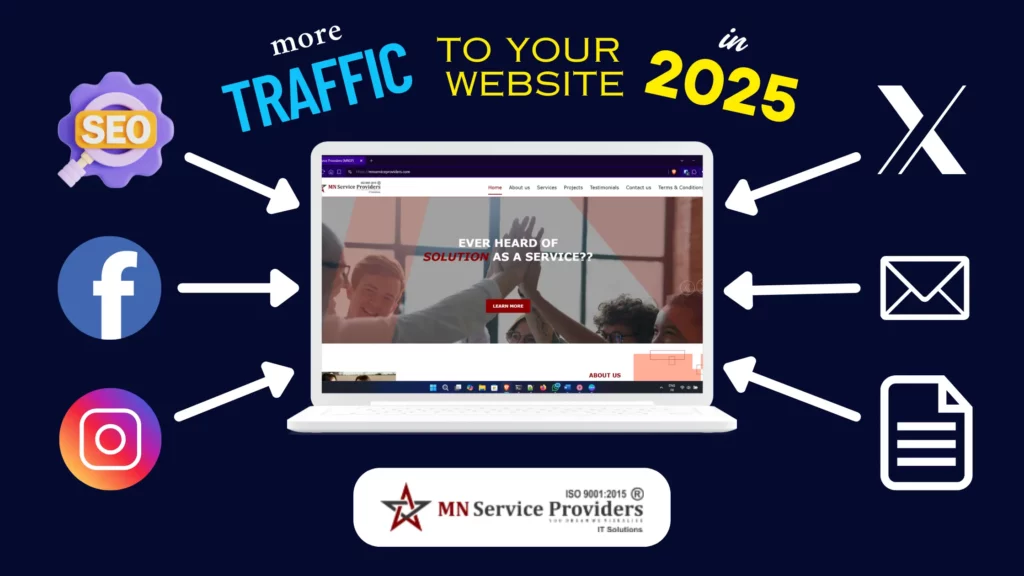
Hey there! Ever feel like you’ve built this amazing online house – your website – but nobody’s ringing the doorbell? You’ve poured your heart, soul, and maybe a few late nights into creating it, showcasing the fantastic services your company offers, only to hear crickets when you check your visitor stats.
It’s a common frustration, like throwing a party and worrying no one will show up. You’re not alone; many businesses find how to get more website traffic on their site a real pain in the rear!
But here’s the good news: getting more website traffic isn’t some dark art reserved for tech wizards. It’s achievable, and it’s absolutely crucial for growing your business online. Think of website traffic as the lifeblood of your online presence.
Boosting your website traffic directly fuels business growth by expanding your reach to potential customers, enhancing brand recognition, and ultimately paving the way for greater company success.
The ways we attract visitors have changed dramatically. It used to be mostly about Search Engine Optimization (SEO), stuffing keywords onto pages. Now, we’re navigating a world buzzing with Artificial Intelligence (AI), voice commands, and super-smart search engines. But don’t let that scare you! The core principles remain: provide value, be visible, and connect with your audience.
This guide will break down exactly how to get more website traffic in 2025, step-by-step, without the confusing jargon. We’ll cover everything from the tried-and-true basics to the latest trends, helping you turn those website crickets into a buzzing crowd. Ready to open the floodgates? Let’s dive in!
Find out how MN Service Providers can offer you a comprehensive digital marketing strategy by clicking the button below.

Understanding the Traffic Landscape in 2025
Before we jump into tactics, let’s get the lay of the land. Knowing where traffic comes from and how people are searching today is key to figuring out how to get more website traffic effectively for your business.
Organic vs. Paid Traffic: What’s Changing This Year
- Organic traffic is the visitors who find you naturally, usually through search engines like Google, without you paying directly for the click. Think of it as word-of-mouth marketing online. It takes time and effort (hello, SEO!), but it builds long-term trust and authority.
- Paid traffic comes from ads, like those you see at the top of Google search results or on social media. You pay for each click or impression. It’s faster – you can get traffic almost instantly – but it stops as soon as you stop paying.
- What’s changing? AI is influencing both. Organic search is adapting to AI-generated summaries (like Google’s AI Overviews), meaning getting the top organic spot might not guarantee as many clicks as it used to. Paid ads might become more competitive or require smarter targeting as AI helps optimize campaigns. The key takeaway? A mix of both organic and paid strategies is often the smartest bet for your company – don’t put all your eggs in one basket!
The Rise of AI-Driven Search and Its Impact on Visibility
- You’ve probably seen them: AI Overviews popping up at the top of Google searches, giving direct answers. While helpful for users, they can mean fewer clicks through to websites for simple questions – this is called a “zero-click search”. Statistics show a significant percentage of searches already end without a click to an external website, and AI might increase this.
- Impact: This makes ranking for very basic informational queries less valuable for traffic. The focus shifts to providing unique insights, in-depth analysis, or content that AI can’t easily summarize, encouraging users to click through for the full picture for your website. It also means getting your content cited within those AI answers is a new frontier for visibility. Understanding how to get more website traffic now involves thinking about how AI uses your content.
How Voice Search and Conversational Queries Are Reshaping SEO
- Think about how you talk to Alexa, Siri, or Google Assistant. You don’t usually say “best web development Bangalore.” You ask, “Hey Google, which is the best web development firm near me?” Modern search queries often take the form of complete sentences and conversational phrases, a trend heavily influenced by the rise of voice assistants.
- Reshaping SEO: This means your website content needs to answer questions directly. Instead of just targeting keywords, think about the questions your potential customers are asking. Optimizing for these conversational queries is becoming crucial for capturing voice search traffic and appearing relevant in an AI-driven search world. It’s a subtle but important shift in thinking about how to get more website traffic.

Mastering SEO for the Modern Web
SEO is the engine that drives organic traffic. It’s not just about keywords anymore; it’s about creating a great experience for both users and search engines. Let’s break down the essentials:
Core Web Vitals: Why Speed, Stability, and Interactivity Matter
- Imagine clicking a link and waiting… and waiting. Or trying to click a button, and the page jumps around. Frustrating, right? Google thinks so too. Core Web Vitals are specific factors Google uses to measure a page’s overall user experience:
- Largest Contentful Paint (LCP): How fast does the main content load?
- Interaction to Next Paint (INP – replacing FID): How quickly does the page respond when you click or tap something?
- Cumulative Layout Shift (CLS): Does the page layout jump around unexpectedly as it loads?
- Why they matter: Faster, more stable pages make visitors happy, reducing bounce rates (people leaving quickly). Happy visitors signal to Google that your site is high-quality, which helps your rankings. Good Core Web Vitals are foundational if you want to know how to get more website traffic from search.
On-Page SEO Essentials: Meta Tags, Headers, and Internal Linking
- Think of On-Page SEO as setting up your house so guests (and search engines) can easily find what they need on your website.
- Title Tags & Meta Descriptions: These are the headline and snippet that appear in search results. Make them compelling, include your target keyword, and accurately describe the page to entice clicks. Your first impression counts!
- Headers (H1, H2, H3, etc.): Use headers to structure your content logically, like chapters in a book. For proper page structure, designate your main page title with the H1 tag, and then use H2s, H3s, and so on, to create a clear hierarchy for your subtopics. This helps readers scan and tells search engines about the page hierarchy.
- Internal Linking: Link relevant pages within your own website together. This helps users navigate, keeps them on your site longer, and distributes “link equity” (ranking power) throughout your site. For instance, a blog post about “Choosing the Right SEO tool” could link to your company’s specific product or service pages.
Keyword Research in 2025: Beyond Volume to Intent
- Keywords are still important, but the game has changed. It’s not just about finding words people search for often (high volume). It’s about understanding why they’re searching (intent).
- Informational Intent: Seeking information (“how does SEO work?”).
- Navigational Intent: Looking for a specific site (“Swiggy website”).
- Transactional Intent: Ready to buy or act (“best hotel near me”).
- Commercial Intent: Comparing options before buying (“best fridge brands 2025”).
- Focus: Target keywords that match the intent you want to attract. For service pages, target transactional or commercial keywords. For blog posts, target informational keywords. Also, focus on long-tail keywords (longer, more specific phrases like “cost to repair an AC that won’t turn on”) – they often have lower competition and attract highly qualified visitors. This targeted approach is key to how to get more website traffic that actually converts for your business.
Schema Markup and Structured Data: Enhancing Search Visibility
- Ever see search results with star ratings, prices, or event dates right in the listing? That’s Schema Markup at work! It’s extra code you add to your website that tells search engines exactly what your content is about in a structured way.
- Benefits: This helps Google understand your content better and can result in “rich snippets” – those enhanced listings that stand out and often get more clicks. You can use schema for your services, reviews, business hours, locations, FAQs, and more. It’s like giving Google a cheat sheet for your site, boosting your visibility.
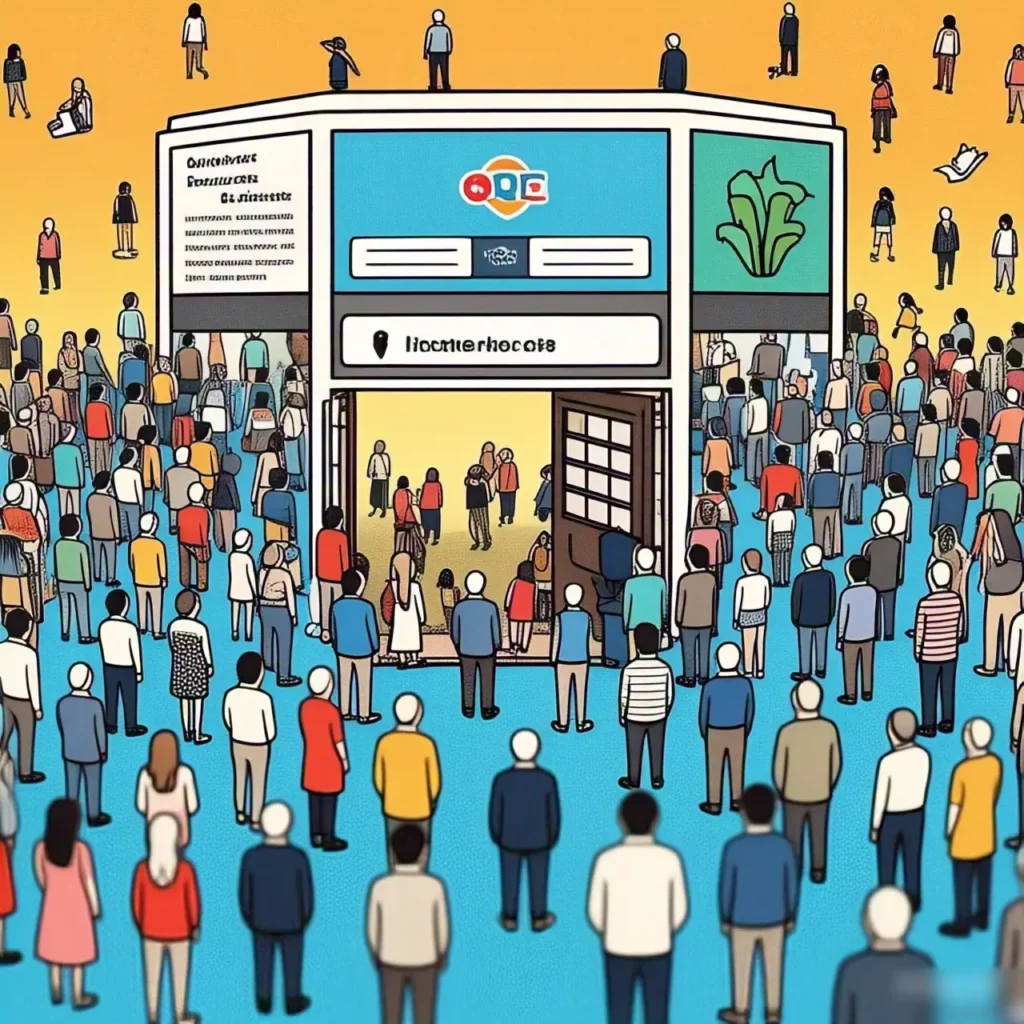
Creating Content That Drives Traffic
Content is king, queen, and the entire royal court when it comes to attracting visitors to your website. But not just any content will do. It needs to be valuable, engaging, and strategic.
Long-Form, Evergreen Content: The Power of Depth and Longevity
- Long-form content (often 1500+ words) tends to rank better because it allows you to cover a topic comprehensively, answer multiple related questions, and naturally include more relevant keywords. Think ultimate guides, in-depth tutorials, or detailed explanations of your services.
- Evergreen content stays relevant over time, unlike news articles or posts about specific holidays. Topics like “How to Maintain Your fridge” or “Signs You Need a car service” will likely be searched for year after year.
- Power: Combining long-form and evergreen strategies creates cornerstone content assets that can consistently bring in traffic long after you hit publish. This is a sustainable way how to get more website traffic for your company.
Content Refreshing: Keeping Your Top Pages Competitive
- The digital world moves fast! Information becomes outdated, competitors publish new content, and search engine algorithms change. Don’t just publish and forget.
- Strategy: Regularly review your most important pages (especially those driving traffic or conversions for your business). Update statistics, add new information, fix broken links, improve clarity, and ensure they still meet user intent. Refreshing content signals to Google that your site is current and actively maintained, helping you keep (or improve) your rankings.
Visual and Interactive Content: Infographics, Quizzes, and More
- Nobody likes staring at a giant wall of text. Break it up!
- Visuals: Use high-quality images, infographics, charts, and videos to illustrate points, make content more engaging, and improve readability. Before-and-after photos of projects, diagrams explaining how a process works, or videos showcasing your services could be powerful.
- Interactive: Consider adding simple quizzes (“What kind of web hosting is right for your needs?”), calculators (estimated costs or savings), or polls. Interactive elements keep visitors engaged longer, reduce bounce rates, and can be highly shareable.
User-Generated Content (UGC): Leveraging Reviews, Testimonials, and Community Contributions
- Because consumers place greater faith in peers than in companies, User-Generated Content (UGC)—material originating from your actual customers or followers—carries significant weight.
- Examples: Customer reviews, testimonials (written or video), comments on blog posts, photos shared on social media featuring your work or products.
- Leverage: Encourage reviews on Google, Yelp, or your own site. Showcase testimonials prominently. Feature customer photos (with permission). UGC builds trust, provides social proof, and can even contain valuable keywords, subtly helping you figure out how to get more website traffic through authenticity.

Leveraging Social Media for Traffic Growth
Social media isn’t just for sharing updates (though those are great too!). It’s a powerful tool for connecting with your audience and driving them back to your website.
Short-Form Video Platforms: TikTok, Reels, and YouTube Shorts
- Attention spans are short, and short-form video is booming. Platforms like TikTok, Instagram Reels, and YouTube Shorts offer huge potential reach.
- Strategy: Create quick tips related to your industry (e.g., “3 signs your mobile phone is failing”), behind-the-scenes glimpses of your company’s work, satisfying process clips, or answers to common customer questions. Always include a call-to-action (CTA) directing viewers to your website link in your bio or profile for more info.
Building Communities on Platforms Like LinkedIn and Discord
- Social media is evolving beyond just broadcasting messages. Building a community creates loyal followers who are more likely to engage and visit your site.
- LinkedIn: Great for B2B service providers or demonstrating industry expertise. Share insights, participate in group discussions, and connect with potential clients or partners. Position your company as experts in your niche.
- Facebook Groups/Discord/Reddit: Create or participate in groups related to your industry, local community issues, or specific niches. Offer helpful advice (don’t just sell!) and subtly guide people to your website resources when relevant.
Influencer Collaborations: Reaching New Audiences Authentically
- Partnering with influencers (people with dedicated online followings) can expose your brand to a new, relevant audience.
- Strategy: Focus on micro-influencers in your niche or related fields (e.g., local lifestyle, relevant industries). Their audiences are often more engaged and trusting. An influencer reviewing your product/service or recommending your company could drive targeted traffic. Authenticity is key; ensure the partnership feels natural.

Email Marketing: A Timeless Traffic Driver
Don’t underestimate the power of email! It’s a direct line to people who have already shown interest in your business, making it one of the most effective ways how to get more website traffic from repeat visitors. Studies show email marketing consistently delivers a high return on investment.
Building and Segmenting Your Email List for Personalized Outreach
- Building: Offer something valuable in exchange for an email address – a free checklist (“Essential Refrigerator Maintenance Checklist”), a discount on first purchase/service, access to an exclusive guide. This is called a lead magnet. Place sign-up forms prominently on your website.
- Segmenting: Don’t send the same email to everyone. Group subscribers based on interests (e.g., interested in Product A vs. Service B), location, or past interactions with your company. Segmentation allows you to send more relevant, personalized content, which gets better results.
Crafting Compelling Newsletters That Encourage Click-Throughs
- Your newsletter shouldn’t just be a sales pitch. Provide real value:
- Share helpful tips (seasonal advice related to your industry).
- Link to your latest blog posts or guides on your website.
- Announce special offers or new products/services.
- Include clear Call-to-Actions (CTAs) like “Read More,” “Learn More,” or “Shop Now”/”Book Now” that link directly back to relevant pages on your website.
Automated Email Sequences: Nurturing Leads and Returning Visitors
- Automation saves time and ensures consistent communication. Set up sequences like:
- Welcome Series: Introduce new subscribers to your company and highlight key resources or offerings.
- Nurture Sequences: Educate leads about specific problems and position your solutions as the answer.
- Re-engagement Campaigns: Reach out to inactive subscribers to bring them back.
- Each email in the sequence is an opportunity to provide value and drive traffic back to your site.
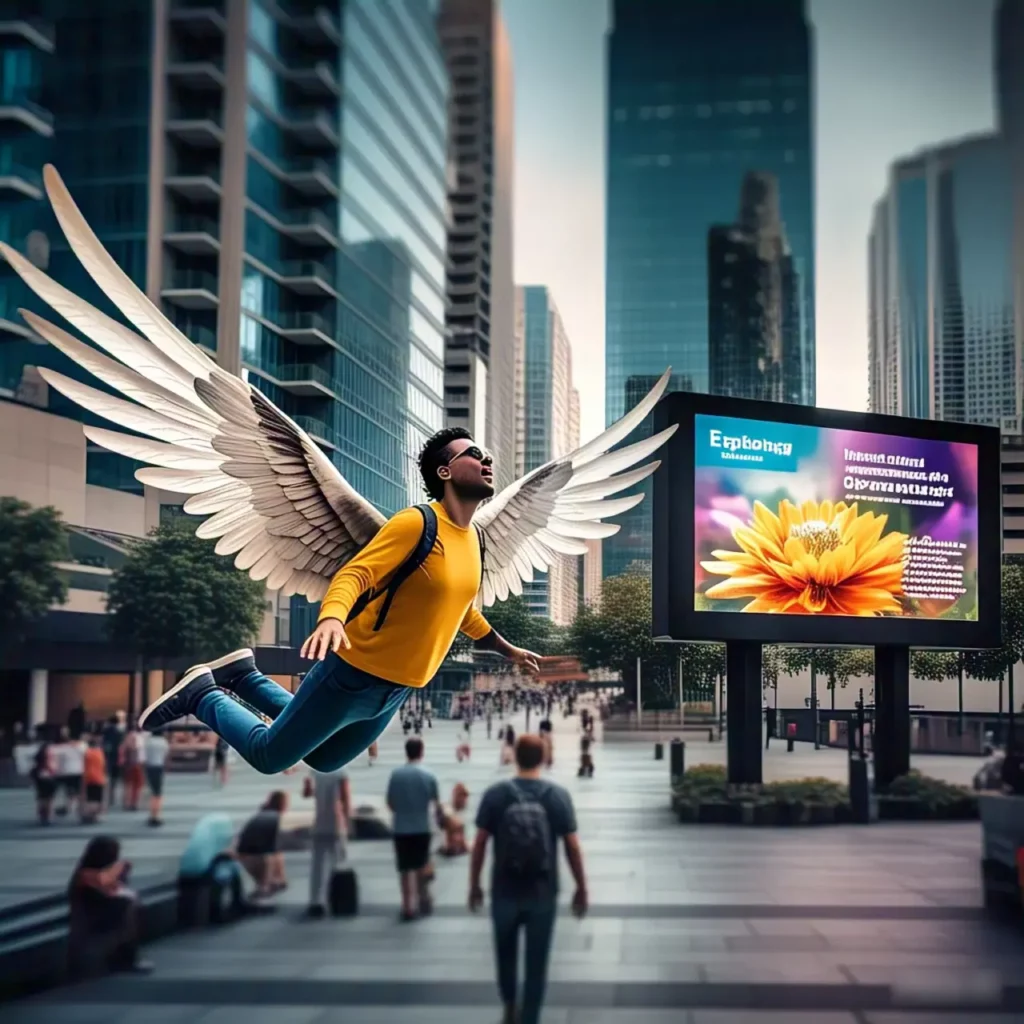
Exploring Paid Advertising Opportunities
While organic methods build long-term traffic, sometimes your business needs a faster boost. Paid advertising puts your message directly in front of targeted audiences.
Google Ads and Search Engine Marketing: Targeting Intent-Driven Users
- Google Ads lets you bid on keywords so your ads appear at the top of search results when people search for terms related to your products or services (e.g., “AI chatbot services in bangalore”).
- Benefit: You reach people who are actively looking for what you offer right now. This is high-intent traffic, often leading to quicker conversions. It’s a powerful tool for immediate visibility, especially while your SEO efforts ramp up.
Social Media Advertising: Facebook, Instagram, and LinkedIn Strategies
- Platforms like Facebook, Instagram, and LinkedIn allow you to target users based on demographics, interests, behaviors, location, job titles, and more.
- Strategy: You can run ads to promote specific products/services, special offers, or valuable content (like a guide or blog post from your website). Visual ads (images and videos) tend to perform well. Great for building brand awareness and driving traffic from specific audience segments relevant to your business.
Retargeting Campaigns: Re-Engaging Past Visitors Effectively
- Ever visit a website, leave, and then see ads for that same website everywhere? That’s retargeting!
- How it works: Using tracking pixels (small snippets of code), you can show targeted ads specifically to people who have already visited your website but didn’t convert (e.g., didn’t make a purchase or fill out a contact form).
- Effectiveness: It reminds them of your business and encourages them to come back and complete the action. Retargeted visitors are often much more likely to convert. This is a smart way how to get more website traffic from people already familiar with your brand.

Technical Optimization for Enhanced Traffic
Your website’s behind-the-scenes structure and performance significantly impact traffic. A technically sound site is easier for search engines to crawl and index, and provides a better experience for visitors, encouraging them to stay and return.
Mobile-First Design: Ensuring Accessibility Across Devices
- More people browse the web on phones than on desktops. Google’s indexing and ranking processes now predominantly rely on the mobile version of websites, a practice known as mobile-first indexing.
- Action: Your website must look and work perfectly on smartphones and tablets. Use responsive design, which automatically adjusts layout based on screen size. Test your mobile usability regularly. A poor mobile experience will drive visitors away and hurt your rankings.
Page Load Speed: Tools and Techniques for Faster Websites
- We talked about Core Web Vitals – speed is a huge part of that. Slow sites kill conversions and rankings. Half of online shoppers might abandon a site if it takes longer than 3 seconds to load.
- Techniques:
- Optimize images (compress them, use correct formats like WebP).
- Minimize code (HTML, CSS, JavaScript).
- Leverage browser caching (stores parts of your site locally so it loads faster on return visits).
- Choose a reliable hosting provider.
- Use tools like Google PageSpeed Insights to test your site’s speed and get recommendations. Improving speed is crucial for keeping the traffic you worked hard to get.
Secure and Accessible Websites: HTTPS, ADA Compliance, and More
- HTTPS: Ensure your website uses HTTPS (the ‘s’ stands for secure). This encrypts data between the user’s browser and your server. Google flags non-HTTPS sites as “not secure” and prefers secure sites in rankings. It’s essential for trust.
- Accessibility (ADA Compliance): Make your website usable for people with disabilities (e.g., screen reader compatibility, keyboard navigation, sufficient color contrast). This broadens your potential audience and is increasingly important ethically and sometimes legally.
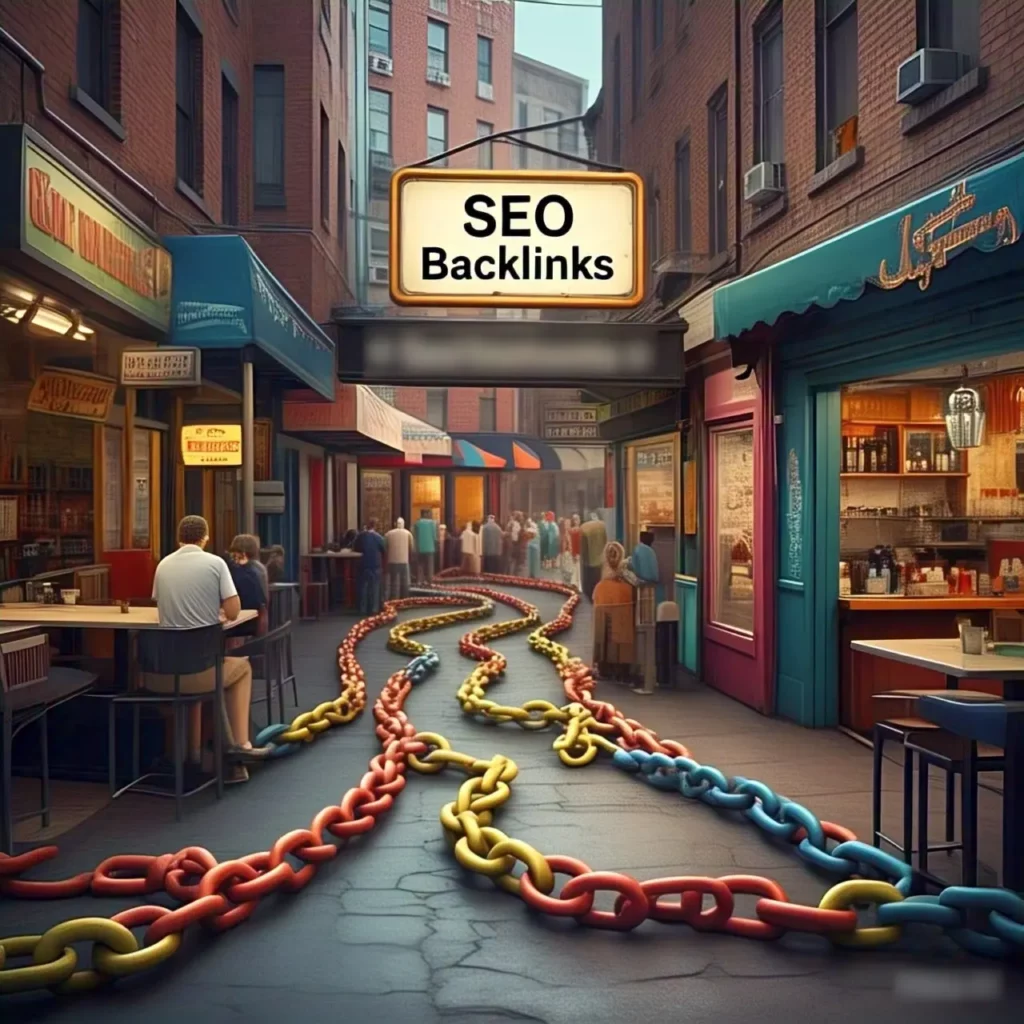
Building Authority Through Backlinks
A backlink occurs when another website includes a link that directs visitors back to your site. Think of them as votes of confidence or recommendations in the eyes of search engines. High-quality backlinks from relevant, reputable sites can significantly boost your site’s authority and rankings.
Guest Posting: Writing for Reputable Sites in Your Niche
- Offer to write an article for another website in your industry or a related one (like a relevant trade publication, local business blog, or complementary service provider’s site). In return, you typically get an author bio with a link back to your website.
- Benefit: It exposes your company to a new audience and earns a valuable backlink. Focus on providing genuine value in your guest post, not just self-promotion.
Digital PR: Creating Newsworthy Content That Earns Links
- Public Relations (PR) isn’t just for big corporations. Create content that journalists, bloggers, or industry publications would want to talk about and link to.
- Examples: Original research/data about trends in your industry, a helpful community resource guide related to your field, sponsoring a local event, or having a unique company story. Promote this content and reach out to relevant media outlets. Earned links from news sites or authoritative blogs are incredibly powerful for your website’s SEO.
Monitoring and Disavowing Toxic Backlinks to Maintain Site Health
- Not all backlinks are good. Links from spammy, low-quality, or irrelevant websites can actually hurt your rankings.
- Action: Regularly monitor your backlink profile using tools like Google Search Console or Ahrefs. If you find toxic links pointing to your site that you can’t get removed, you can use Google’s Disavow Tool to tell Google to ignore them. It’s like weeding your garden to keep the good plants healthy.
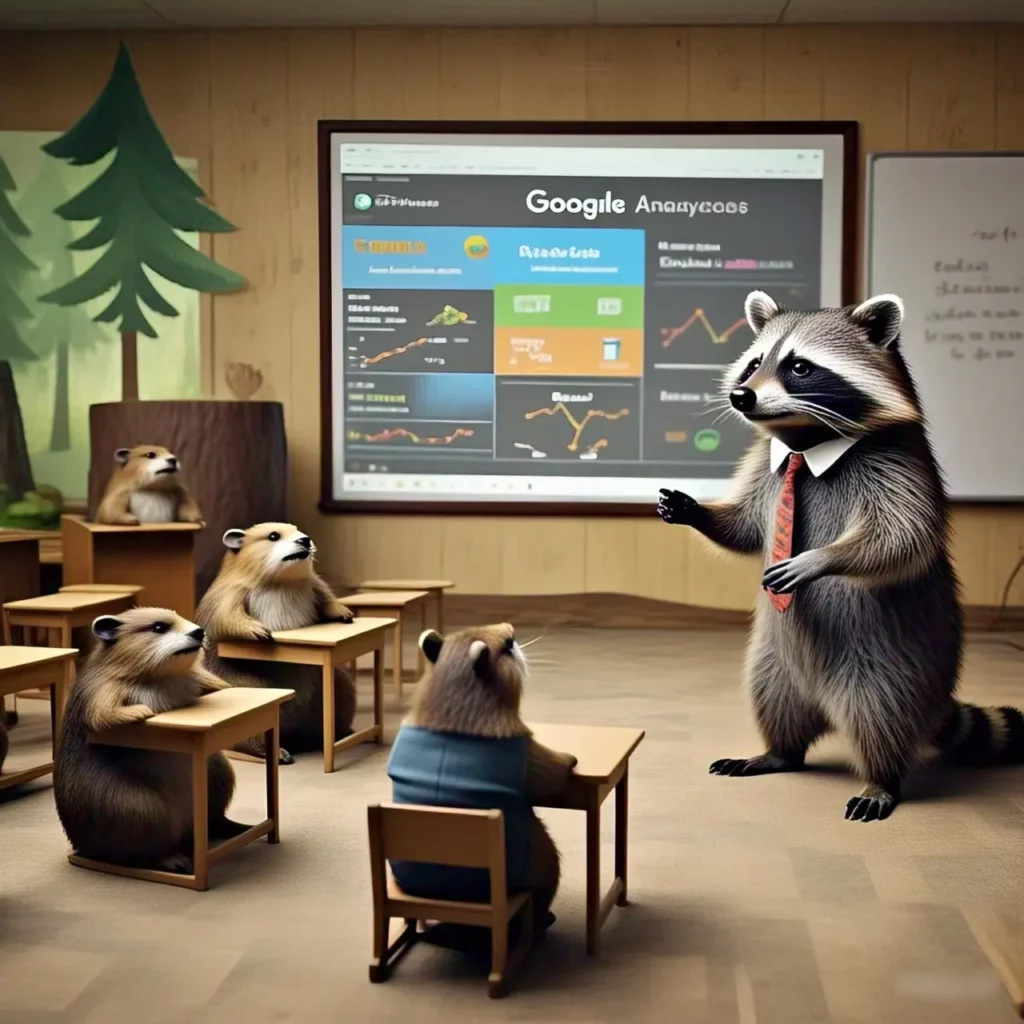
Utilizing Analytics for Continuous Improvement
You can’t improve what you don’t measure. Website analytics are your roadmap, showing you what’s working, what’s not, and where opportunities lie for getting more website traffic to your site.
Setting Up and Interpreting Google Analytics 4 Reports
- Google Analytics 4 (GA4) is the standard tool for tracking website traffic and user behavior. If you haven’t already, set it up for your website!
- Key Reports:
- Acquisition Reports: Show where your traffic is coming from (Organic Search, Paid Search, Social, Referral, Direct).
- Engagement Reports: Show how users interact with your site (pages viewed, time spent, events completed).
- Demographics/Tech Reports: Tell you about your audience (location, age, device used).
- Learn to read these reports to understand traffic patterns and identify your most valuable channels.
Tracking User Behavior to Inform Content and Design Decisions
- Analytics show you which pages on your site are popular, which have high bounce rates (people leaving immediately), and where users drop off in conversion funnels (like completing a purchase or filling out a form).
- Insights: Use this data to identify content topics that resonate with your audience, pages that need improvement, or navigation issues on your website. Tools like Hotjar can even provide heatmaps (showing where people click) and session recordings. Understanding behavior is key to optimizing the user journey on your site.
A/B Testing: Experimenting with Headlines, CTAs, and Layouts
- A/B testing (or split testing) involves creating two versions of a page element on your website (e.g., two different headlines for a blog post, two different button colors for a CTA) and showing each version to a portion of your audience to see which performs better.
- Goal: Make data-driven decisions to improve conversion rates and engagement on your site. Even small changes can sometimes lead to significant improvements in how effectively you capture leads or guide visitors.

Embracing Emerging Technologies and Trends
The digital landscape never stands still. Staying aware of new tools and trends can give your business an edge in the quest for how to get more website traffic.
AI Tools for Content Creation and Optimization
- AI can assist with brainstorming blog topics for your website, drafting initial content outlines, optimizing headlines, checking grammar, and even generating simple descriptions or social media posts.
- Caution: Use AI as a tool, not a replacement for human creativity and expertise. Always review, edit, and add your unique insights and brand voice to AI-generated content. But it can definitely speed up the process.
Voice Assistants and Smart Devices: Preparing for the Next Search Frontier
- As mentioned earlier, voice search is growing. Optimizing for conversational queries and ensuring your business information (address, phone number, hours) is easily accessible and accurate online (especially in Google Business Profile) is crucial for capturing this traffic. Think about “near me” searches and direct answers related to your offerings.
Sustainability and Ethical Marketing: Aligning with Modern Consumer Values
- Consumers increasingly care about a company’s values. Highlighting sustainable practices (if applicable to your business), community involvement, or ethical operations can build trust and resonate with certain audiences. Transparency and authenticity in your marketing are more important than ever.
Conclusion
Whew! That was quite a comprehensive overview! From understanding the shifting sands of search with AI and voice commands to mastering SEO, creating killer content, leveraging social media, and diving into analytics, figuring out how to get more website traffic in 2025 is definitely a multi-layered puzzle for your business.
Find out how MN Service Providers can offer you a comprehensive digital marketing strategy by clicking the button below.
Frequently Asked Questions (FAQ)
To increase website traffic, focus on creating high-quality, SEO-optimized content, engage actively on social media, and build backlinks from reputable sites.
Achieve 1,000 visitors by combining targeted keyword optimization, consistent content publishing, and promoting your site through email marketing and social media channels.
Free traffic can be generated by optimizing your site for search engines, sharing content on social media platforms, and participating in relevant online communities and forums.
SEO enhances your website’s visibility in search engine results, making it easier for potential visitors to find your content, thereby increasing organic traffic.
To reach 1,000 daily page views, consistently publish valuable content, optimize for relevant keywords, and actively promote your site across various online channels.
Melvin C Varghese is an author with more than 8 years of expertise in DevOps, SEO and SEM. His portfolio blogs include a Digital Marketing blog at https://melvincv.com/blog/ and a DevOps blog at https://blog.melvincv.com/. He is married with 2 small kids and is a simple person who eats, sleeps, works and plays. He loves music, comedy movies and the occasional video game.